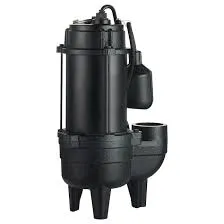Somali
- Afrikaans
- Albanian
- Amharic
- Arabic
- Armenian
- Azerbaijani
- Basque
- Belarusian
- Bengali
- Bosnian
- Bulgarian
- Catalan
- Cebuano
- Corsican
- Croatian
- Czech
- Danish
- Dutch
- English
- Esperanto
- Estonian
- Finnish
- French
- Frisian
- Galician
- Georgian
- German
- Greek
- Gujarati
- Haitian Creole
- hausa
- hawaiian
- Hebrew
- Hindi
- Miao
- Hungarian
- Icelandic
- igbo
- Indonesian
- irish
- Italian
- Japanese
- Javanese
- Kannada
- kazakh
- Khmer
- Rwandese
- Korean
- Kurdish
- Kyrgyz
- Lao
- Latin
- Latvian
- Lithuanian
- Luxembourgish
- Macedonian
- Malgashi
- Malay
- Malayalam
- Maltese
- Maori
- Marathi
- Mongolian
- Myanmar
- Nepali
- Norwegian
- Norwegian
- Occitan
- Pashto
- Persian
- Polish
- Portuguese
- Punjabi
- Romanian
- Russian
- Samoan
- Scottish Gaelic
- Serbian
- Sesotho
- Shona
- Sindhi
- Sinhala
- Slovak
- Slovenian
- Somali
- Spanish
- Sundanese
- Swahili
- Swedish
- Tagalog
- Tajik
- Tamil
- Tatar
- Telugu
- Thai
- Turkish
- Turkmen
- Ukrainian
- Urdu
- Uighur
- Uzbek
- Vietnamese
- Welsh
- Bantu
- Yiddish
- Yoruba
- Zulu
Telephone: +86 13120555503
Email: frank@cypump.com
Sep . 22, 2024 01:24 Back to list
slurry pumps specification
Understanding Slurry Pump Specifications
Slurry pumps play a crucial role in various industries, particularly in mining, construction, and wastewater treatment. These pumps are specifically designed to handle abrasive and viscous materials, making their specifications essential for ensuring optimal performance and longevity. Understanding the key specifications of slurry pumps can help in selecting the right pump for specific applications.
One of the most critical specifications is the pump capacity, which refers to the volume of slurry that the pump can move over a specific period, typically measured in cubic meters per hour (m³/h). This capacity is influenced by the size of the pump and the design of its impeller. A higher capacity is essential for demanding applications, while lower capacities may suffice for lighter tasks.
Understanding Slurry Pump Specifications
Solids handling capability is crucial for slurry pumps, as these pumps are often employed to transport materials containing solid particles. Specifications typically detail the maximum particle size and concentration the pump can handle efficiently without causing wear or clogging. For example, some pumps can manage solids up to several inches in diameter.
slurry pumps specification

Material of construction is also significant in slurry pump specifications. The pumps must be made from durable materials to withstand wear from abrasive particles. Common materials include high-chrome alloy, rubber-lined steel, and some specialized alloys that resist corrosion and abrasion.
Power requirements and efficiency ratings should also be considered. Slurry pumps can be energy-intensive, so selecting a pump with optimal energy consumption can reduce operational costs. Efficiencies are often expressed as a percentage, and higher values indicate better performance.
Lastly, it’s essential to consider the installation and maintenance requirements. Some pumps may require more complex installations or more frequent maintenance, which can impact overall operational costs and downtime.
In conclusion, understanding the specifications of slurry pumps—capacity, head pressure, solids handling capability, material of construction, power requirements, and maintenance needs—ensures that the right pump is selected for the job. These specifications not only influence the effectiveness of the slurry transport but also the overall efficiency and sustainability of the operation.
-
ISG Series Vertical Pipeline Pump - Chi Yuan Pumps Co., LTD.|High Efficiency, Energy Saving, Low Noise
NewsJul.30,2025
-
ISG Series Vertical Pipeline Pump- Chi Yuan Pumps|High Efficiency&Low Noise
NewsJul.30,2025
-
ISG Series Vertical Pipeline Pump-Chi Yuan Pumps Co., LTD.|High Efficiency&Energy Conservation
NewsJul.30,2025
-
ISG Series Vertical Pipeline Pump - Chi Yuan Pumps Co., LTD.|Advanced Hydraulic Design&Energy-Efficient Solutions
NewsJul.30,2025
-
ISG Series Vertical Pipeline Pump - Chi Yuan Pumps Co., LTD.
NewsJul.30,2025
-
ISG Series Vertical Pipeline Pump - Chi Yuan Pumps Co., LTD.|energy-efficient fluid handling&industrial durability
NewsJul.30,2025










